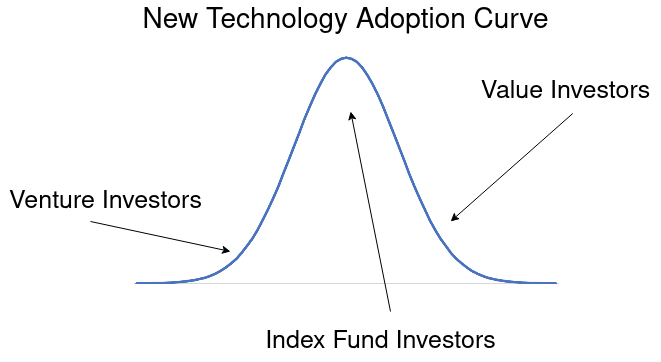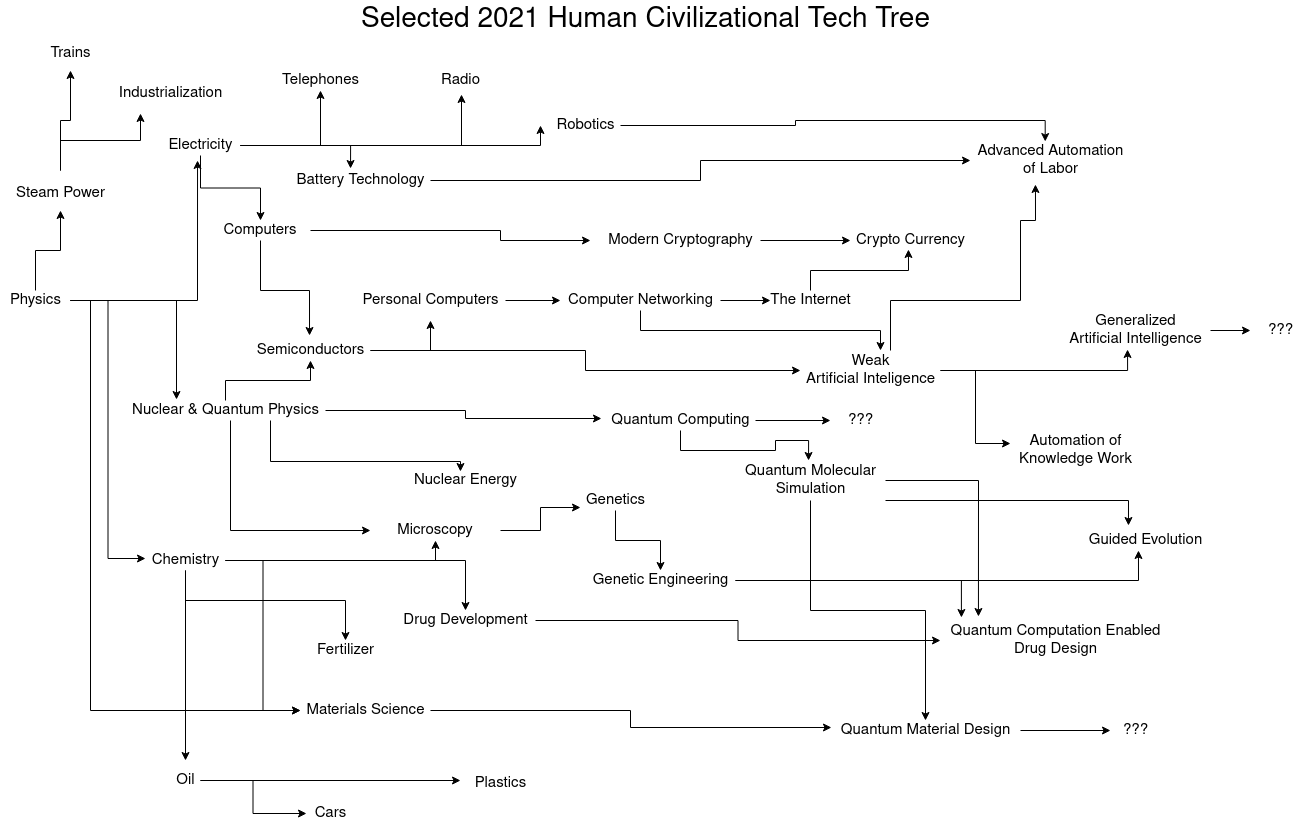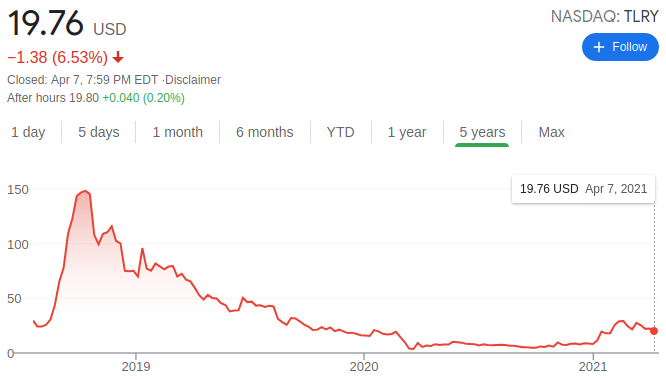An Introduction To Ultra Long Term Trend Following
Trend Following is a quantitative approach to trading markets that uses mathematical techniques to identify directional trends in markets and attempt to ride them. This strategy works on the assumption that markets tend to “trend” (move in the same direction for periods of time) and that you can design indicators over the long run to catch these trends. If you do this in a systematic way over a long enough period of time you should come out ahead. And it does work.
Trend following practitioners tend to use time frames that are designated as long or short - where short term trend duration could be as short as a couple of weeks and long term is usually measured in months but may even a couple of years. Many trend followers use simple mathematical indicators such as moving average crossovers, but that’s not the focus of this post. There are many techniques used to identify a trend mathematically or otherwise.
Ultra Long Term
But if a long term can even be a trend that lasts a few years, what is ultra long term? Well, one hypothesis I have is that trends in markets are fractal, meaning that the same pattern may be observed on multiple time frames.
 A Mandelbrot sequence
A Mandelbrot sequence
So taking this supposition to it’s conclusion you can zoom out even further and ride a 10 year, 20 year or 30 year trend. Trends probably exist on 100 year and 1000 year time frames as well (e.g. the span of an empire). The effective limit for this kind of investing is the human life span - but consider another assumption: technological progress is speeding up and big trends are getting shorter.
Note: it’s also possible that exploitable trends exist within intra-day, intra-hour, and even instra-second market time frames but for now I want to focus on ultra long term time frames.
Types of Ultra Long Term Trends
I’d like to highlight ultra long term trends that come in two flavors: technological and societal.
A technological trend would be one spawned by a new technology such as the printing press, electricity, computers, or the internet. You can think of this as the traditional playground of venture investors.
A societal trend would be a trend spawned by a change in human behavior. This may have an underlying root cause or it may be part of a repetitive cycle. An example would be decades long migration of people from the country to cities. This has been caused by both increasing automation used in agriculture and the consequences of the industrial revolution. It continues to this day although remote work & Covid-19 may have upset this trend.
Another societal trend example would be the growth of Asian emergining markets and the stagnation of developed western economies such as Europe. These trends have traditionally been the domain of macro investors.
For the remainder of this piece I will focus on technological trends, although doing ultra long term trend following on societal trends is also interesting.
Technological Trends
One way to observe technology trends is through the perspective of the “adoption curve”. You’ve probably encountered this concept before, but have thought about where different types of investors fall on their exposure to a technology adoption curve? Typically venture investors get in early, index investors will be investing near the peak as these technologies are represented by companies in public markets and finally value investors come in at the end riding the carcasses of these once great companies into the dirt. I whipped up a diagram to demonstrate:

Mapping the Civilizational Tech Tree
To trend follow you need to be taking every bet in a systematic way. For this approach it means you need to know about every emerging technology and determine how and when to bet on it. In terms of technology this means mapping the tech tree of our civilization. I drew a picture to help explain what I meant:

There is a lot going on here. But this is work you need to do for ultra long term trend following. You have to understand the map and where new landscape is developing.
But here is what I want to point out: technology appears to be increasingly being developed and increasingly cross pollinating with other existing technologies to forge new ones. And I’m even leaving out a lot of stuff on here.
As an aside, I have some ideas on why it is increasing - I believe it is because human civilization recently developed the latest major “soft” technology. The first being money, the second being written language, and the third being software. This concept is explained in more depth here.
What, how can you bet on “electricity”?
To do this kind of ultra long term trend following from a technological perspective you are going to need to take a bet on every emerging technology that ends up being real and impactful. You cannot afford to miss a single bet.
You could not have afforded to “miss” electricity. You could not have afforded to ignore oil. Also, these trends played out over essentially a century or so.
But now, things are different. Because of computing technological trends are happening much quicker. Essentially every technology ever invented can be re-invented. And as artificial intelligence gets better, these re-inventions can be yet again iteratively re-invented.
So taking these bets on emerging technologies is now easier: you can bet on multiple trends in a single lifetime because the length of technology trends has been reduced from 100 years to 20 or even 10 years.
And you have to take a lot of bets because many of them (most of them?) will not end up making you money. But the ones that do should reward you with huge multiples. So maybe this is the first time in history you can do this strategy in a single life time.
Probably the fastest one of these recently was cryptocurrency. The next iteration of trends in crypto appears to be applications on top of cryptocurrency: decentralized finance.
Maybe CRISPR enabled gene editing will be another big fast technological trend? Maybe it will be Messenger RNA based cancer vaccines, which is the endgame of Moderna’s mRNA technology that was used to develop the Covid-19 vaccine so quickly.
When do you bet on a tech trend?
This is something I’m still trying to figure out. The adoption curve recently has looked different. There is a saying in tech: in the short term the impact is overestimated, but in the long term the impact is underestimated.
What this means is that asset bubbles routinely develop. Things get overhyped. Coming back to cryptocurrency: we are in what appears to be the 4th hype cycle with previous iterations in 2011, 2014, and 2017.
You can observe the same thing with commercialized legalized marijuana - there was a big hype cycle and a bubble developed in 2018, it then crashed. Now, it looks like legalization is really happening and these stocks are starting to rise again. Some of them have positive earnings and their revenue growth numbers are excellent. This time it looks the hype is warranted.
So maybe the best time to buy into a new tech trend is right after the first crash?
 A famously bubbly marijuana stock begins to recover 3 years later
A famously bubbly marijuana stock begins to recover 3 years later
Maybe that wasn’t exactly the best example in terms of technology, but the exact same thing appears to be playing out again with 3-D printing companies. To me this is a pattern that seems to hold.
Even the 1998-2000 internet stock bubble holds with this pattern. If you bought the survivors of the first crash you would have bought Amazon.com and Microsoft, now dominant players in the new economy reshaped by the internet. Again: short term was overestimated, long term underestimated.
When do you sell an ultra long term trend?
I’m not sure about this yet. I think the optimal strategy might be to continually rotate into new trends and de-allocate out of the old trends you are allocated while never totally divesting anything.
This might look like putting 5 or 10% of the portfolio into new trends each year, and taking that from the oldest allocations. Then over a period of a decade you turned over most of the portfolio and kept up with the trends.
How do you backtest this strategy?
Another hard question. How do you design a backtest that would pick the technological trends and bet on stocks the way you would have? I’m not sure it’s possible, and I’m not sure it’s possible to do this picking quantitatively.
I think you would be able to come up with rules for portfolio allocation to test against stocks, and sell signals to test (would you use sell signals unless the company turned out to be a fraud?), but ultimately that is just half of the system you need.
Conclusions
I was thinking the other day that Cathie Wood is actually a trend follower, she is just a very long term trend follower. So much of the stocks in ARK are going to end up being overvalued junk or go bankrupt, but some of these could make 100x or 1000x returns and become the next trillion dollar company. In the very long term it will probably work at least as well as index investing.
Venture capitalists are ultra long term trend followers. I don’t think the majority of them think about their business like this, but I do now. They make a lot of small bets on very speculative companies that might be emerging technologies. I don’t think the majority of them look at the big picture of the full human technology map, and I don’t know if they all focus on societal trends. I think they also tend to be very concentrated in certain markets but this is what they are doing.
A true trend following strategy needs to have as much diversity as possible. You need exposure to every single tech trend and every societal trend. You cannot specialize.
In the next post I’m going to look at ultra long term trend following from a societal trend perspective. I’d also like to dig on when the best time to buy into a technology trend is and how to pick a winner in a particular space.
